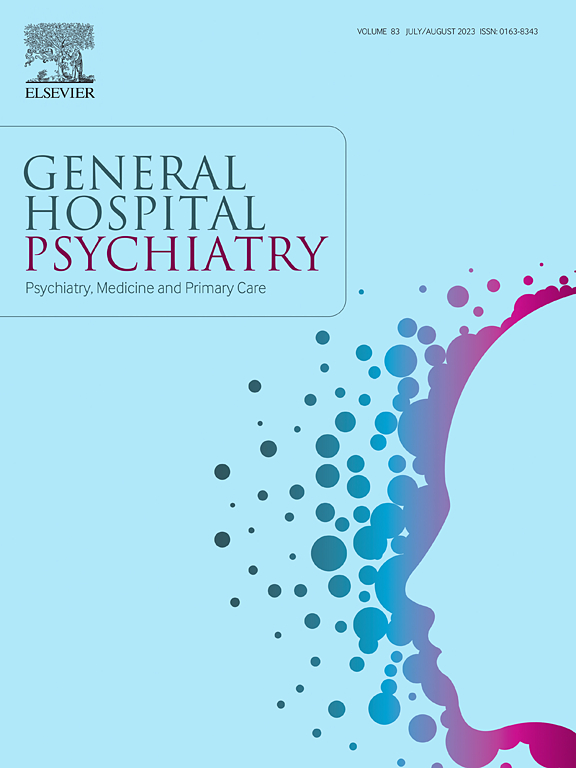The efficacy and acceptability of physical activity for mental health disorder: A comprehensive umbrella review of 103 meta-analyses and systematic reviews
IF 3.7
2区 医学
Q1 PSYCHIATRY
引用次数: 0
Abstract
Background
Despite numerous studies investigating the efficacy and acceptability of physical activity (PA) for specific mental health disorders, comprehensive guidelines on the appropriate type, frequency, and duration of PA for each disorder remain lacking. This review aims to synthesize effect sizes and provide a thorough evaluation of the efficacy and acceptability of PA for mental health disorders.
Method
A comprehensive literature search was conducted across multiple databases, including PubMed, PsycINFO, Embase, Cochrane Library, and Web of Science.
Results
Following an extensive search and rigorous assessment, 103 articles were selected, 4268 study groups, and 364,889 participants. The combined effect size indicates a moderate effect of PA on mental health disorder: SMD = 0.534 (95 % CI 0.514 to 0.554) (class I evidence). Tai Chi or Qigong demonstrated the highest efficacy in treating mental health disorder (SMD = 0.693, 95 % CI 0.538 to 0.848) (class II evidence). Regarding acceptability, the overall dropout rate ranged from 4.5 % to 41.7 %, with most treatment groups showing similar dropout rates compared to control groups. Notably, aerobic exercise exhibited a lower dropout rate, whereas mind-body exercises and high-intensity groups had higher dropout rates. Evidence suggests a core principle of prioritizing moderate-intensity activity as the foundation—specifically, ≥3 sessions per week, each lasting 30–60 min, sustained for a total period exceeding 6 weeks.
Conclusions
Our study is the first to comprehensively summarize the efficacy of PA in treating mental health disorders. We provide detailed recommendations on the feasibility and acceptability of various PA modalities, tailored to different conditions. Specifically, our synthesis offers guidance on the most suitable types of PA, along with their frequencies and durations, for each specific disorder.
体育活动对精神健康障碍的疗效和可接受性:103项荟萃分析和系统综述的综合综述
尽管有大量研究调查了体育活动(PA)对特定精神健康障碍的疗效和可接受性,但关于每种疾病适当的PA类型、频率和持续时间的综合指南仍然缺乏。本综述旨在综合效应量,并对PA治疗精神健康障碍的疗效和可接受性进行全面评估。方法在PubMed、PsycINFO、Embase、Cochrane Library、Web of Science等数据库中进行综合文献检索。经过广泛的搜索和严格的评估,我们选择了103篇文章,4268个研究组,364,889名参与者。综合效应量表明,PA对精神健康障碍有中等影响:SMD = 0.534 (95% CI 0.514 ~ 0.554) (I类证据)。太极或气功在治疗精神健康障碍方面表现出最高的疗效(SMD = 0.693, 95% CI 0.538 ~ 0.848) (II类证据)。在可接受性方面,总体辍学率从4.5%到41.7%不等,与对照组相比,大多数治疗组的辍学率相似。值得注意的是,有氧运动的辍学率较低,而身心运动和高强度运动组的辍学率较高。有证据表明,优先考虑中等强度活动作为基础的核心原则-具体而言,每周≥3次,每次持续30-60分钟,持续总时间超过6周。结论本研究首次全面总结了PA治疗精神健康障碍的疗效。我们针对不同的情况提供了各种PA模式的可行性和可接受性的详细建议。具体来说,我们的合成为每种特定疾病提供了最合适的PA类型,以及它们的频率和持续时间的指导。
本文章由计算机程序翻译,如有差异,请以英文原文为准。
求助全文
约1分钟内获得全文
求助全文
来源期刊

General hospital psychiatry
医学-精神病学
CiteScore
9.60
自引率
2.90%
发文量
125
审稿时长
20 days
期刊介绍:
General Hospital Psychiatry explores the many linkages among psychiatry, medicine, and primary care. In emphasizing a biopsychosocial approach to illness and health, the journal provides a forum for professionals with clinical, academic, and research interests in psychiatry''s role in the mainstream of medicine.
 求助内容:
求助内容: 应助结果提醒方式:
应助结果提醒方式:


